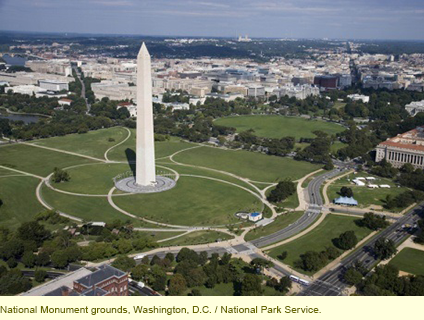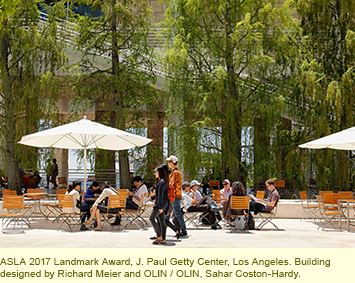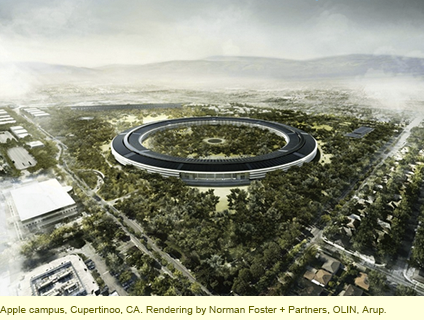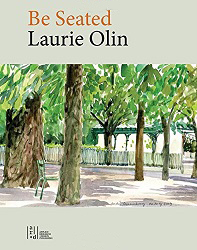People
- Congratulations to Therese O'Malley, retiring from the Center, National Gallery (1982-2021)
- 2020 Place Maker / Place Keeper Honorees
- Congratulations to Elizabeth K. Meyer!
- Congratulations to Reuben Rainey!
- Meet Betsy Smith, newly appointed president of the Central Park Conservancy as she steps into the shoes of Douglas Blonsky
- As retiring president and CEO of the Central Park Conservancy, Douglas Blonsky leaves behind an extraordinary legacy
- Board Member Robin Karson made honorary member of the American Society of Landscape Architects
- Board Member Laurie Olin is honored by the National Building Museum
- Gold Medal Winner
- Women Who Made New York
- Germany's Green Prince
- 2016 Place Maker / Place Keeper Honorees
- 2015 Place Maker / Place Keeper / Lifetime Achievement Honorees
- Kudos for Board Member Laurie Olin
- Celebrate our 2014 Place Maker and Place Keeper Awardees
- Pillar of New York Award
- Spotlight on Board Members
Board Member Laurie Olin is honored by the National Building Museum
With the receipt of the Vincent Scully Prize, Laurie Olin joins Jane Jacobs, His Royal Highness Prince Charles, Phyllis Lambert, and Andres Duany in the museum's pantheon of those deemed most influential in shaping our built environment.
In a brief tour of some of his greatest work – including the landscapes of the National Gallery of Art sculpture garden and National Monument, as well as the Getty and Barnes museums – Olin expressed his joy in creating democratic spaces for people. He was interviewed by landscape architect James Corner, ASLA, founder of Field Operations, a former student of his.
Some highlights from the wide-ranging lecture and conversation with Corner:
“I aim for creating a sense of calm resolve, a quiet seamlessness. The heavy lifting is hidden; I want to make it look effortless. This, however, can cause problems for me: people will see my projects and ask: ‘Why did it cost so much? What took so long?'”
 “Landscape architecture is not the sauce you pour over something; it’s part of the structure of an environment. When talking to people who don’t know what landscape architecture is, steer the conversation to another level. Landscape is a device for that.”
“Landscape architecture is not the sauce you pour over something; it’s part of the structure of an environment. When talking to people who don’t know what landscape architecture is, steer the conversation to another level. Landscape is a device for that.”
“Landscape architecture is not the sauce you pour over something; it’s part of the structure of an environment. When talking to people who don’t know what landscape architecture is, steer the conversation to another level. Landscape is a device for that.”
 “Many things have changed since I started practicing in the 1970s. Many processes have changed for the better, thanks to new technologies. However, our faster world has caused impatience among clients. They say: ‘Why isn’t this done? We just emailed you yesterday.’ Digital technologies have made it harder to take time to slow down, stop, and think. Projects that take longer, that stall, are better because of the slowness. There is more time to consider. Landscape architecture is the slow food of design.”
“Many things have changed since I started practicing in the 1970s. Many processes have changed for the better, thanks to new technologies. However, our faster world has caused impatience among clients. They say: ‘Why isn’t this done? We just emailed you yesterday.’ Digital technologies have made it harder to take time to slow down, stop, and think. Projects that take longer, that stall, are better because of the slowness. There is more time to consider. Landscape architecture is the slow food of design.”
“In the 1970s, most landscape architects were working in the suburbs; today, they are fully engaged in the city, because that’s where the people are. Then, just getting an urban mini-park built was seen as a major triumph; today, landscape architects are creating larger urban parks and even regional plans.”
On working with “starchitects” like Frank Gehry, Norman Forster, and Richard Meier: “Architects are control freaks. They have to be. It’s hard to get things done, or even done well, and especially hard to get something done brilliantly. So they become maniacs. It’s important to learn their ways of thinking, but then you have to push back.”
“Some people will say they can see a project and know it’s my work. But I don’t have a style. They are looking more at the handwriting than the style."
 On the controversial new 150-acre Apple campus in Silicon Valley, a collaboration with architect Norman Forster: “Steve Job’s idea was a forest – a big park – for his campus for tens of thousands of employees. He believed in nature and the health benefits of the natural world. His favorite park was Hyde Park in London. He was also a fan of Frederick Law Olmsted and studied his work. His vision was a park that was also an everyday workplace, where employees could go have walks and meetings under a tree. I agreed with this vision.”
On the controversial new 150-acre Apple campus in Silicon Valley, a collaboration with architect Norman Forster: “Steve Job’s idea was a forest – a big park – for his campus for tens of thousands of employees. He believed in nature and the health benefits of the natural world. His favorite park was Hyde Park in London. He was also a fan of Frederick Law Olmsted and studied his work. His vision was a park that was also an everyday workplace, where employees could go have walks and meetings under a tree. I agreed with this vision.”
 On the role of new parks in gentrification: “We need a green public realm for the health of our populations. We need places where citizens can come together. We need to spend money and build things well.” The way to address gentrification is to “eliminate the inequalities” in access to great parks. “We need to bring great parks to places like North Philadelphia.”
On the role of new parks in gentrification: “We need a green public realm for the health of our populations. We need places where citizens can come together. We need to spend money and build things well.” The way to address gentrification is to “eliminate the inequalities” in access to great parks. “We need to bring great parks to places like North Philadelphia.”
“Fears about community, other people, or terrorism negatively affect our public spaces. I believe in an open society and open environment. We can bring optimism and resistance – we can push back with good design.”
On President Trump’s proposed wall along the southern border with Mexico: “I disapprove of that on ecological, environmental grounds alone. The climate, ecosystems, and geology – and the people – run north south. You can’t divide people. I totally disagree.”
Olin’s new book, “Be Seated,” examines the role of seating in the public realm and includes many of his original drawings and watercolors.
